書籍の管理方法をラクにした話
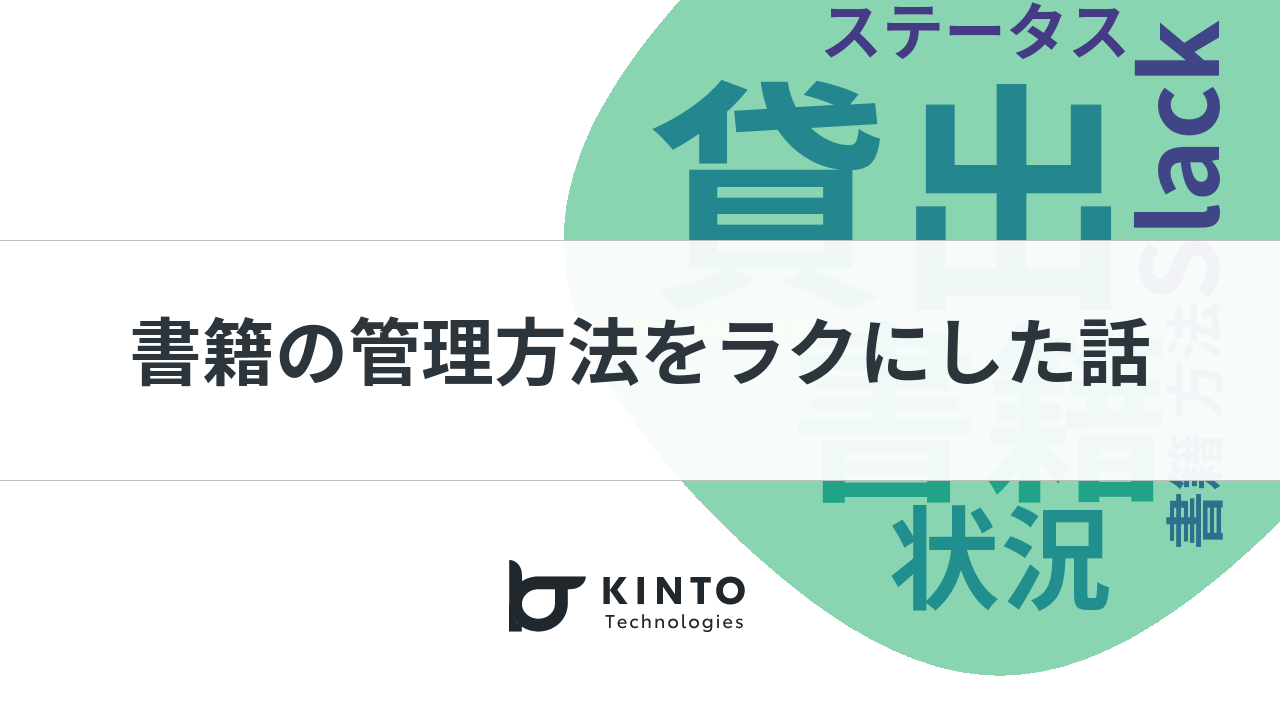
はじめに
はじめまして、KINTOテクノロジーズでモビリティマーケットの開発・運用を担当しているリナです。
普段はフロントエンジニアとして、主にNext.jsを用いて実装しています。
最近のマイブームは、ガンプラの塗装とスプラトゥーンをやることです🎮
さて、KINTOテクノロジーズでは業務に役立つ書籍を経費で購入しています。
購入した書籍はCIO室で管理され、従業員が自由に貸出できるようになっています。
そこで今回は、購入した書籍の管理方法をラクにした話を紹介します!
従来の書籍管理の方法
従来の書籍管理の方法はConfluenceを使用して、貸出状況を手作業で更新していました。

管理の流れは、以下の通りです。
- 管理担当者が、購入書籍をConfluenceの書籍貸出一覧に記載
- 貸出希望者は、Confluenceの書籍貸出一覧から書籍を選んで、管理担当者にSlackで貸出連絡
- 管理担当者がSlackの内容をもとにConfluenceの貸出状況を更新
このように書籍を貸出する上で、
- 貸出・返却希望者Slackで管理担当者に連絡する
- 管理担当者は、都度貸出状況を手作業で更新する
という手間が発生していました。
この手間を解消すべく、書籍の管理方法を一新しました!
新しい書籍管理の方法
新しい書籍の管理方法はJIRAのワークフローとカンバン方式のボードを使用して、管理者を介さずに貸出状況が分かるようにしました。
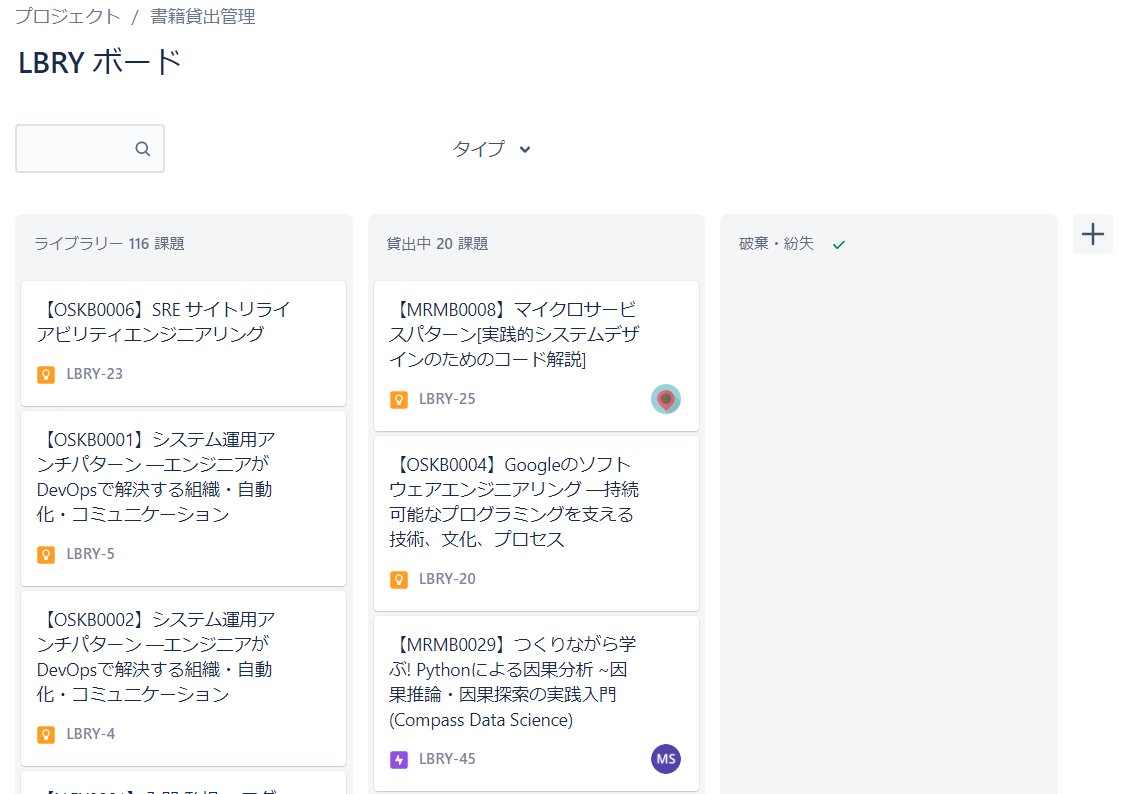
カンバン方式のボード
管理の流れは、以下の通りです。
- 管理担当者が、購入書籍をボードのライブラリーにチケットを登録
- 貸出希望者は、ライブラリーから書籍を選んで、ステータスを「貸出中」に変更
これだけです!
管理者はボードに購入書籍を登録するだけで、貸出状況が一目見てわかるようになり、貸出状況を手作業で更新する必要がなくなりました。
一方、貸出・返却希望者は、管理担当者を介さずにステータスを変更するだけ貸出登録が可能になり、Slackで貸出・返却時に連絡する手間を省くことができました。
ラクするためのJIRAワークフロー
このボードを作成するにあたって、以下のようなワークフローを設定しています。
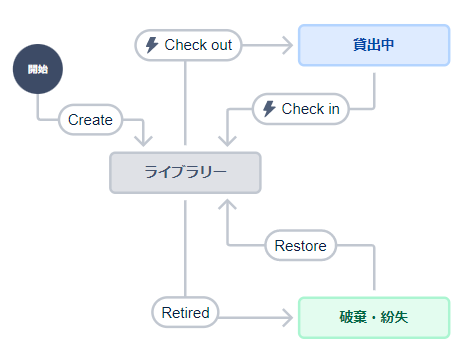
ワークフロー
「ライブラリー」「貸出中」「破棄・紛失」3つのステータスを作成し、ステータスを移動する際に一部の情報を自動入力することで、入力する負担を軽減しました。
各ワークフローに設定している内容は、以下の通りです。
Check out (ステータス「ライブラリー」→「貸出中」に変更)
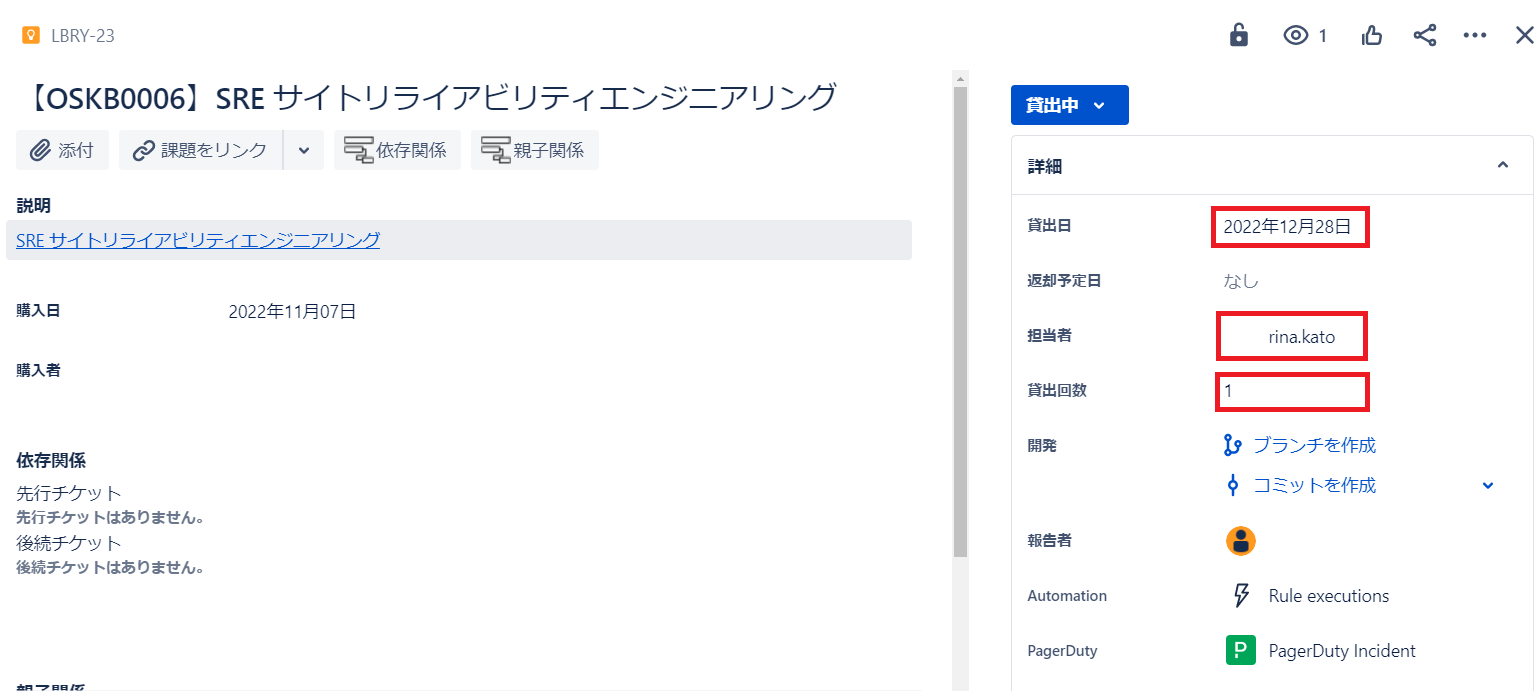
- 貸出日に本日の日付を自動入力する
- 担当者(貸出希望者)を自動で割り当てる
- 貸出回数をカウントする
Check in (ステータス「貸出中」→「ライブラリー」に変更)
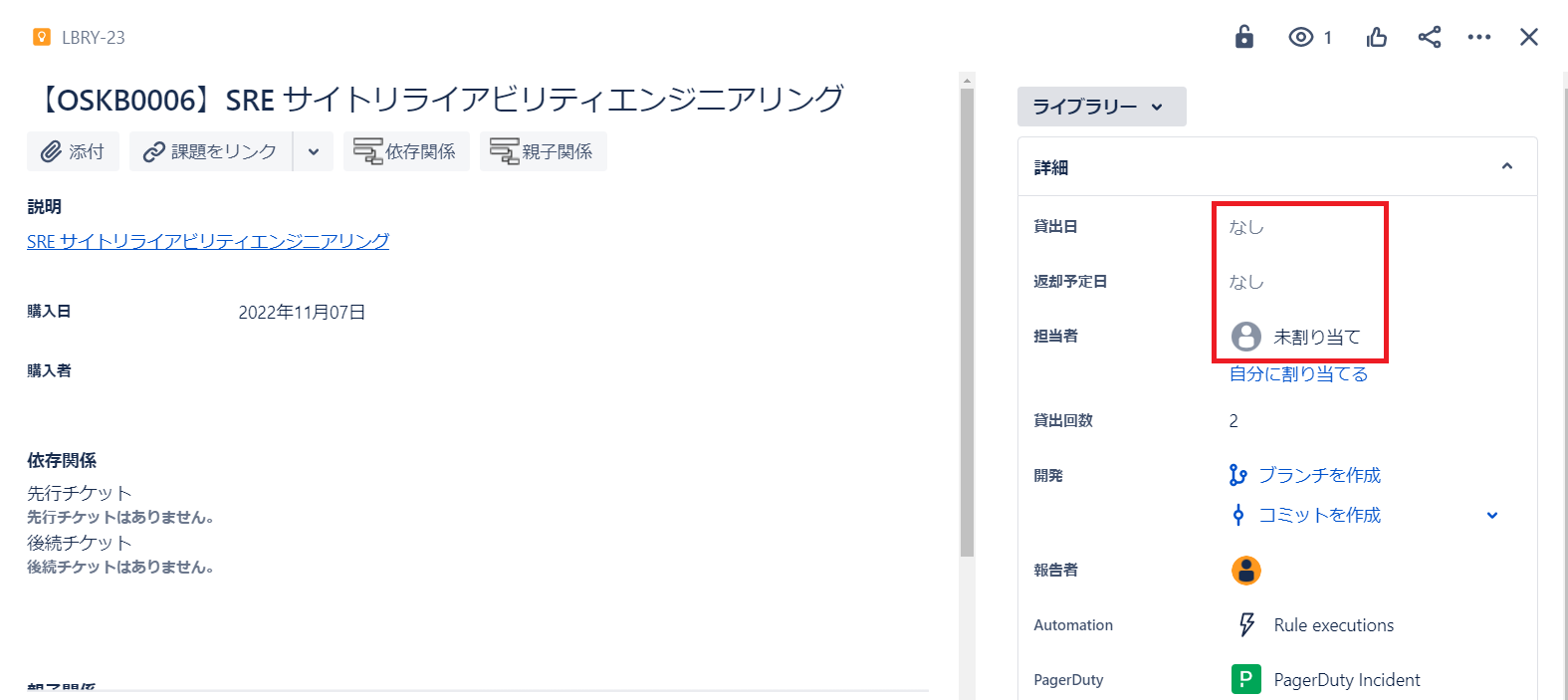
- 貸出日・返却予定日を自動消去する
- 担当者(貸出希望者)を自動消去する
さらにラクするための一工夫
全オフィスの書籍の管理状況がわかる
さらにオフィスごとに何の書籍があるか、アイコンを設定することで視覚的に把握できるようにしました。
タイプを選択するとオフィス毎の管理状況を絞り込んで表示できるようになっています。

KINTOテクノロジーズは、東京に2拠点と名古屋・大阪に1拠点ずつオフィスがあります。
従来は、各拠点ごとに書籍を管理していましたが、全拠点の書籍が1つのボードで一元管理できるようにしました。
Slackで変更履歴を通知
また、JIRAの通知機能を使用して、管理者用にステータスの変更履歴をSlackに通知しています。
Slackに通知することで、新しく購入された書籍や誰がステータスを変更したかなどが把握できるようにしました。

ラクにした結果
書籍の管理方法を見直した結果、それぞれ以下のようなメリットがあると思っています。
-
管理担当者のメリット
- 書籍の管理状況を手作業で更新する必要がなくなった
- パッとみて貸出状況・貸出者が誰かわかるようになった
- オフィスごとに管理していた書籍を全オフィス一元管理できるようになった
-
貸出・返却希望者のメリット
- 書籍の貸出・返却時にSlackで連絡する必要がなくなった
- ステータスを変更するだけで、貸出登録ができる(文字の入力不要!)
さいごに
今回の記事では、書籍の管理方法をラクにした話をご紹介しました。
ちょっとした手間を省くことで管理者も利用者もハッピーになればいいなと思っています✨
関連記事 | Related Posts
We are hiring!
【PdM】契約管理システム開発G/東京
契約管理システム開発グループについて契約管理システム開発グループは、クルマのサブスクリプションサービス『KINTO ONE』(新車・中古車)を中心とした国内向けサービスにおいて、申込から契約満了(中途解約を含む)までの社内業務プロセスのシステム化と、契約状態の管理を担っています。
【クラウドエンジニア】Cloud Infrastructure G/東京・大阪・福岡
KINTO Tech BlogWantedlyストーリーCloud InfrastructureグループについてAWSを主としたクラウドインフラの設計、構築、運用を主に担当しています。



